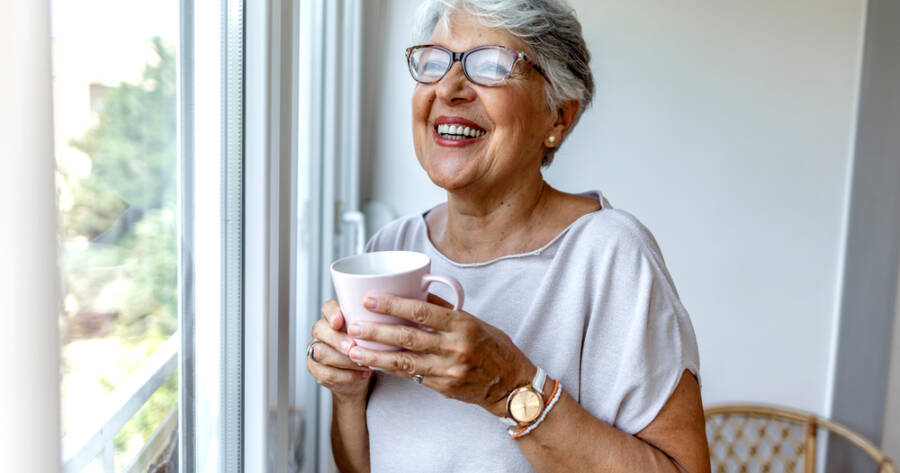Aging in place is all about preserving independence while staying safe, comfortable, and confident at home. As needs shift with time, small changes in the home environment can make a big difference. Whether it’s preventing falls or simplifying daily routines, smart upgrades help ensure that staying home remains both practical and enjoyable. From the bathroom to the kitchen, thoughtful modifications allow seniors to continue living life on their terms.
Bathroom: Safety Starts with Simplicity
The bathroom can be one of the most hazardous areas in the home due to slippery surfaces and tight spaces. Installing a walk-in tub or barrier-free shower reduces the risk of falls and makes bathing more accessible. Non-slip mats in and around the shower, as well as textured tile flooring, further enhance safety.
Grab bars near the toilet and in the shower provide steady support during transitions. Raised toilet seats can also be beneficial for those with limited mobility or joint pain. Adequate lighting and a sturdy shower chair can turn the bathroom from a risk zone into a secure, functional space where seniors feel safe and supported.
Living Room: Creating a Clear, Comfortable Space
The living room is a place for relaxation, but clutter or poor layout can lead to accidents. Clearing walkways, securing area rugs, and organizing cords and electronics help prevent trips and falls. Choose furniture with sturdy armrests to assist with standing and sitting, and arrange seating in a way that promotes easy movement around the room.
Lighting plays a key role in preventing missteps. Floor lamps, table lamps, and motion-sensor night lights can help illuminate darker corners. If mobility aids are used, wider pathways and minimal furniture placement are essential. A few small adjustments can ensure the living room remains a cozy and safe gathering space for years to come.
Kitchen: Function Meets Safety
Cooking should be enjoyable, not hazardous. In the kitchen, non-slip mats and anti-fatigue rugs near sinks and stoves add comfort and safety. Lever-style faucet handles, easy-grip drawer pulls, and pull-out shelving make everyday tasks simpler for those with arthritis or limited reach.
Ensure cabinets are well-organized with frequently used items placed at waist height to avoid unnecessary bending or stretching. Bright, glare-free lighting under cabinets and over counters improves visibility. Appliances with large, easy-to-read controls and auto-shutoff features provide peace of mind. A safer kitchen fosters independence and keeps the heart of the home running smoothly.
Bedroom: Comfort That Supports Rest and Routine
The bedroom should be a restful, supportive space. A bed at the correct height makes it easier to get in and out without strain. Bed rails, if needed, provide added security during the night. A sturdy nightstand within arm’s reach can hold essentials like water, glasses, and a phone.
Clear pathways from the bed to the door and bathroom are vital, especially for nighttime navigation. Motion-activated floor lighting can help prevent accidents in the dark. Closet organizers, lower hanging rods, and labeled drawers reduce the need to stretch or bend. When designed with comfort and safety in mind, the bedroom becomes a dependable place for restorative rest.
Entryways and Hallways: Smooth Transitions Throughout the Home
Navigating entryways and hallways is part of daily life, so ensuring these areas are safe and accessible is key. Install handrails along hallways to provide balance support. Smooth, even flooring helps prevent trips—consider replacing thick carpet or loose rugs with slip-resistant surfaces.
Threshold ramps or low-profile transitions between rooms can assist with walkers or wheelchairs. Widening doorways may be necessary for accessibility devices, and lever-style door handles are easier to manage than knobs. A well-lit, clutter-free hallway with plenty of support allows seniors to move confidently from room to room without worry.
Home That Grows With You
The best home is one that adapts to your needs over time. Modifying living spaces doesn’t mean sacrificing comfort or style—it means building a safe, personalized environment that promotes independence and peace of mind. Each change, from brighter lighting to walk-in showers, adds to the freedom of staying where your memories live. With the right adjustments, home can remain not just a familiar place, but the safest and most empowering one, too.

